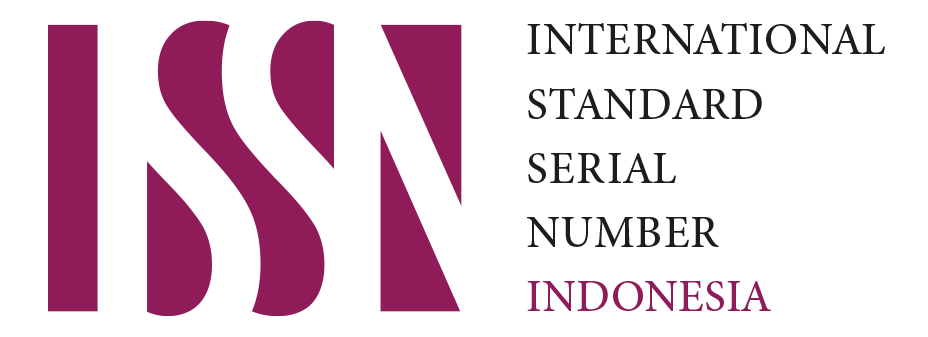STATEGI PENGEMBANGAN EKOWISATA BERKELANJUTAN DI KAWASAN OBJEK WISATA PANTAI KABUPATEN KULONPROGO TAHUN 2021
DOI:
https://doi.org/10.20961/ijed.v1i1.61Keywords:
Potency, Tourism, Object, EcotourismAbstract
ABSTRACT
The purpose of this research is: 1. To find out the Environmental Characteristics and Distribution of Beach Attractions in Kulonprogo Regency. 2. To find out the Potential Attractions of Beach Attractions in Kulonprogo Regency 3. To find out the Sustainable Ecotourism Development Strategy of Kulonprogo Regency Beach Attractions. Research Location is all beach attractions in Kulonprogo Regency which include Trisik Beach, Glagah Beach, Congot Beach and Kadilangu Sand Beach with Potential and Development Strategy using analysis of Tourism Suitability Index for Characteristics and Distribution of Attractions, Potential uses The Potential Score of Attractions as well as the Green Tourism Association for Sustainable Ecotourism Development by using qualitative description research methods with a survey approach to collect information from respondents using questionnaires / questionnaires and in-depth interviews of concerned respondents from visitors to cuttingholders whose data is collected from the top sample of the population to represent the entire population. The results of this study are (1) The distribution and environmental characteristics of each beach in Kulonprogo Regency are not much different, namely the type of iron sand beach or black sand with agrotourism potential, and all beaches are in Temon and Galur districts, Trisik Beach is in Trisik village and Glagah Beach, Congot Beach and Kadilangu Sand Beach located in Jangkaran village;(2) All potential kulonprogo beach attractions are tourist attractions with tourism potential is different from the results of the score. and Glagah Beach is the beach with the greatest potential and each beach has a distinctive attraction that is different and unique; (3) The development of Ecotourism of Kulonprogo Regency is obtained by the management of ecological sustainability or Green Tourism Association appropriate from the Environment, economic development to cultural diversity described from each beach. Trisik Beach development directive from 4 criteria that have been appropriate needs to be revamped on Turtle Conservation and Chicken Farming that is not yet appropriate, Glagah Beach development directive has been in accordance according to the assessment of ecotourism criteria only need to be further managed by the Laguna levy and fishermen's results, Congot Beach development directive only 4 are appropriate so that there is still much need for improvement and related management such as fishing villages and ombah breakers and coastal development directives Pasir Kadilangu has not been suitable for mangrove forest conservation and shrimp farming. Ecotourism Development Strategy from Kulonprogo Tourism Office such as DED and levy collection; (4) Implementation of high school learners' teaching materials modules in geography subjects of Forestry, Mining, Marine and Tourism Resources Distribution in Accordance with The Principles of Sustainable Development Class XI in the form of interesting and easy to understand learning modules.
References
Anom, P. I. (2010). Pariwisata Berkelanjutan Dalam Pusaran Krisis Global.
Astuti, M. T., & Noor, A. A. (2016). Daya Tarik Morotai Sebagai Destinasi Wisata Sejarah Dan Bahari. Jurnal Kepariwisataan Indonesia, 11(1), 25–46.
BPS Kabupaten Kulonprogo 2019. (2019). Hakim, L., Siswanto, D., & Makagoshi, N. (2017). Mangrove Conservation In East Java: The Ecotourism Development Perspectives. Journal Of Tropical Life Science, 7(3), 277–285. https://Doi.Org/10.11594/Jtls.07.03.1 4
Ihsan, H.Soegiyanto, P. H. (2015). Pengembangan Potensi Ekowisata Di Kabupaten Bima. Jurnal Geoeco Vol. 1, No.2 (Juli 2015) Hal. 195-206, 1(2).
Mananda, S. (2015). Strategi Pengembangan Potensi Pantai Pasir Putih Sebagai Wisata Bahari Di Desa Perasi Kecamatan Karangasem , Kabupaten Karangasem , Bali. 1–67.
Maulana, I., & Aprianto, M. C. (2018). Strategi Pengembangan Ekowisata Berbasis Ekonomi Kearifan Lokal: Sebuah Kasus Di Kampung Tajur, Purwakarta. Eqien: Jurnal Ekonomi Dan Bisnis, 5(2), 50–58. https://Doi.Org/10.34308/Eqien.V5i2.60
Pramono, H. (2012). Geografi Pariwisata (Issue 1999).
Sugiyono. (2011). Metode Penelitian Kuantitatif, Kualitatif Dan R&D.
Sunaryo, B. (2013). Kebijakan Pembangunan Destinasi.Pdf (P. Xiv + 240).
Syamsuddin, Watimury, P., & Adianto. (2016). Dampak Perkembangan Kawasan Wisata Pantai Liang Terhadap Masyarakat. 8, 53–58.
Torres-Delgado, A. (2014). Using Indicators To Assess Sustainable Tourism Development : A Review Tourism Geographies : An International Journal Of Tourism Space , Place And Using Indicators To Assess Sustainable Tourism Development : A Review. Tourism Geographies, 0(0), 1–17. https://Doi.Org/10.1080/14616688.2 013.867530
Yanuar Sulistyaningrum. (2012). Analisis Persebaran, Potensi, Dan Pengembangan Obyek Wisata Alam Di Kabupaten Kebumen Berdasarkan Bentuk Lahan.
Yoeti, O. A. (2018). Pengantar Ilmu Pariwisata. 36, 5–6.
Yunita, R. A. A. (2018). Pengembangan Pariwisata Berkelanjutan.
Downloads
Published
Issue
Section
License
Copyright (c) 2022 Indonesian Journal of Environment and Disaster

This work is licensed under a Creative Commons Attribution 4.0 International License.






